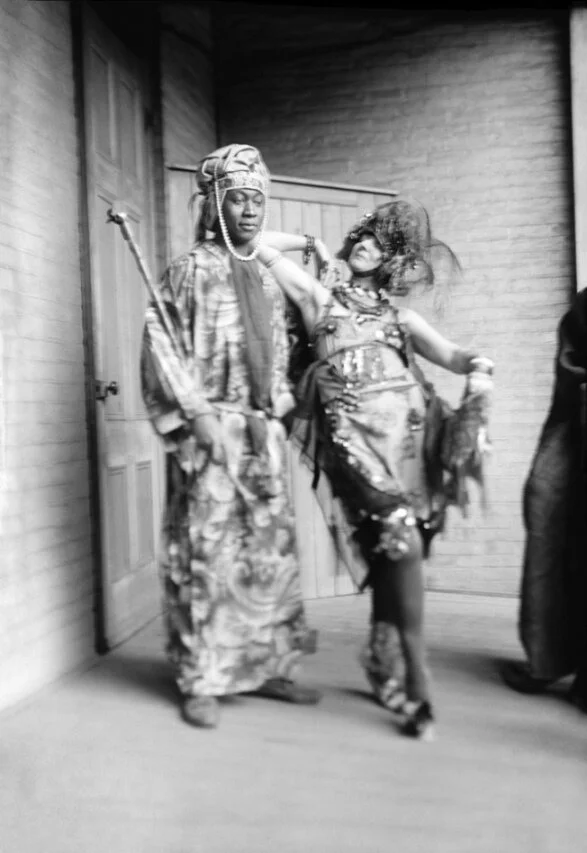

My doctor has always told me to smoke. He even explains himself:
‘Smoke, my friend. Otherwise someone else will smoke in your place.’
- ERIK SATIE


Apollinaire smoking his pipe in Picasso's studio, circa 1910
Picasso, Garçon à la Pipe (Boy with a Pipe), 1905.
In the heady atmosphere of early 20th century Paris, artists played with visual and psychological space in Cubism and Surrealism. The Dadaist artists used chance to create their art, leading to expressions of wit, eros and the uncanny in the object-riddles presented by Duchamp’s readymades— intended to provoke the imagination.



Guillaume Apollinaire, poet and art critic, led the way. In May 1917, Apollinaire coined the term “surréalisme,” which appeared in the program notes to the avant-garde ballet Parade, directed by Russian impresario Sergei Diaghilev (1872– 1929) with a libretto by Jean Cocteau (1889–1963), music by Erik Satie (1866–1925), and costume and set design seen above by Pablo Picasso (1881–1973). Satie's music was titled Three Pieces in the Shape of a Pear — alternately melodic and dissonant, it predicted atmospheric chill music, the rhythms of Phillip Glass, and contemporary jazz.
Apollinaire called for a synthesis of the arts, voicing a joy in the modern sensibility - a spiritual revolution.
George and Marcel were spiced with mischief. Their exhibitions or tournaments employed irony and wit, drawing from the Surrealist stream of imagination. George often performed with an actual blindfold, as if he were a visionary, and Duchamp played tricks on the viewer by changing the frame of reference of art.
My mind is a gramophone record. When I want to know what moves have been made, I start the record in my mind. Then I listen.
— GEORGE KOLTANOWSKI
Duchamp’s circle included artists and chess players, writers and collectors. He maintained close relationships with the Romanian sculptor Brâncuși; with his lover, renowned bookbinder Mary Reynolds; and with his creative pal, Man Ray. In New York 1915, Duchamp came to know artist Beatrice Wood, the poets Mina Loy, William Carlos Williams, Wallace Stevens, and many others. Koltanowski began his astonishing blindfold displays in the 1930’s culminating in his exhibition in Edinburgh, 1937.

Beatrice Wood, New York 1912, before she met Marcel Duchamp and Henri-Pierre Roché.

The diplomat and writer, Henri-Pierre Roché

Marcel Duchamp

Baroness Elsa von Freytag-Loringhoven, who offered poems to Duchamp, ''Marcel, Marcel, I love you like hell.''

Mina Loy, poet and painter, who participated in the Arensberg’s salons 1915-18.

Constantin Brancusi, Marcel Duchamp and Mary Reynolds in Villefranche, France, 1929.

The Crowd outside The Jockey in Paris in 1923. Front row: Man Ray, Mina Loy, Tristan Tzara, Jean Cocteau Middle row: Kiki, Jane Heap, Margaret Anderson, Ezra Pound Top row: Bill Bird on the left, Hilaire Hiler and Curtiss Moffit on the right.

Giorgio de Chirico in the Parisian studio with "The Archaeologists", 1928. Duchamp knew Giorgio de Chirico in the 1920's and continued his friendship although Andre Breton excluded him from Surrealsim.

Koltanowski performing blindfolded at the Edinburgh Chess Tournament, 1937. Koltanowski developed into a showman as he became well known.
Juan Gris’s Chessboard, Glass and Dish, 1917 (below) depicts the chessboard through overlapping and transparent forms, compelling the image to play hide and seek with your eye. Showing that a fixed view of the world was forever gone, Duchamp played similar games with the viewer's ideas, whereas Koltanowski's memory feats seemed a magician's sleight of hand: both spoke of the power of imagination.
Juan Gris, Chessboard, Glass and Dish, 1917

“Delightful and enlightening! Celia Rabinovitch investigates Duchamp as arbitrator in Giorgio de Chirico and André Breton’s duel, and Duchamp’s ‘wait for posterity’ rings out like a chess clock giving pause and reflection on one of modern art’s greatest tragedies.”
—KATHERINE ROBINSON, scientific coordinator of Metaphysical Art: The de Chirico Journals of the Fondazione Giorgio e Isa de Chirico

